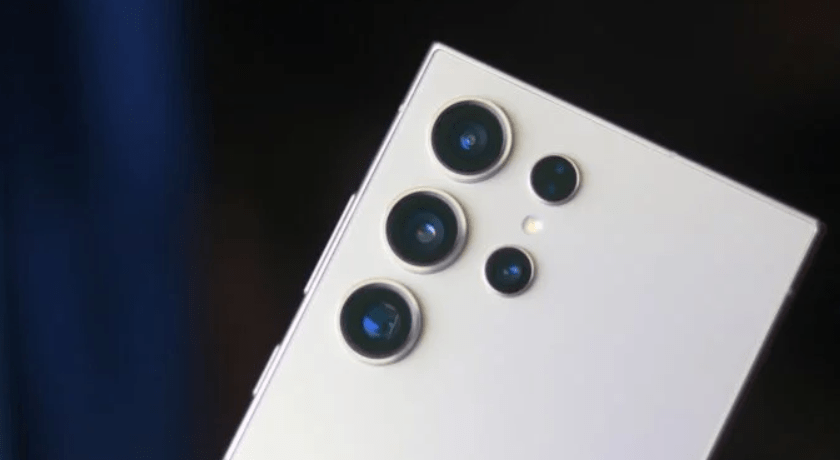Introduction
Samsung has just announced a trio of new Samsung ISOCELL Camera Sensors, including the ISOCELL GNJ, ISOCELL HP9, and ISOCELL JN5. While these aren’t the flagship sensors, they’re set to make significant strides in enhancing the photography capabilities of smartphones, particularly in telephoto and ultrawide applications. With the ever-increasing importance of high-quality cameras in smartphones, these new sensors promise to deliver impressive performance and versatility.
Overview of Samsung ISOCELL Camera Sensors:
Samsung’s latest camera sensors—the ISOCELL GNJ, ISOCELL HP9, and ISOCELL JN5—are designed to cater to a range of photographic needs. These sensors are expected to be integrated into future Android smartphones, including Samsung’s own devices, offering improved photography options for telephoto and ultrawide cameras.
Detailed Look at ISOCELL GNJ
Specifications
The ISOCELL GNJ is a 50MP sensor featuring 1µm pixels and a 1/1.57-inch optical format. It’s equipped with dual-pixel autofocus, ensuring precise and rapid focus even in challenging lighting conditions. This sensor also boasts in-sensor zoom functionality, enhancing the optical zoom capabilities when paired with appropriate lenses.
Features
- Dual-Pixel Autofocus: Ensures quick and accurate focusing.
- In-Sensor Zoom Functionality: Provides optical-quality zoom.
- Power Efficiency: Consumes 29% less power in preview mode and 34% less power while recording 4K 60fps videos.
Advantages of ISOCELL GNJ
The ISOCELL GNJ sensor offers several key advantages. Its dual-pixel autofocus improves focus accuracy and speed, making it ideal for capturing sharp images in low-light conditions. The in-sensor zoom functionality allows for further zoom without significant loss in image quality. Additionally, it is designed to be more power-efficient, extending battery life during photo and video sessions.
Detailed Look at ISOCELL HP9

Specifications
Samsung’s ISOCELL HP9 is the latest 200MP camera sensor. It features a 1/1.4-inch optical format and 0.56µm pixels. This sensor promises a 12% increase in light sensitivity and a 10% improvement in autofocus contrast performance compared to its predecessor, the ISOCELL HP3.
Features
- Higher Light Sensitivity: Captures more light for brighter images.
- Improved Autofocus Contrast: Ensures sharp focus.
- 4×4 Pixel Binning: Enhances performance in low-light conditions.
Advantages of ISOCELL HP9
The ISOCELL HP9 offers highly accurate color reproduction thanks to its advanced microlens technology. It achieves faster autofocus and better low-light performance, making it suitable for both primary and telephoto cameras. With its 4×4 pixel binning, the sensor excels in low-light environments and can produce impressive background blur effects. Its zoom capabilities, up to 12x optical-quality zoom, make it a versatile choice for smartphone photography.
Detailed Look at ISOCELL JN5
Specifications
The ISOCELL JN5 is another 50MP sensor from Samsung, featuring a 1/2.76-inch optical format. It’s expected to be used primarily in ultrawide cameras, enhancing the versatility of smartphone cameras.
Features
- Dual Vertical Transfer Gate Technology: Reduces noise in low-light conditions.
- Super Quad Phase Detection: Enhances autofocus accuracy.
- Dual Slope Gain: Improves dynamic range and HDR performance.
Advantages of ISOCELL JN5
The ISOCELL JN5 sensor offers significant improvements in dynamic range and HDR performance. Its advanced autofocus technology ensures quick and accurate focusing, while the Dual Vertical Transfer Gate technology minimizes noise in low-light settings. The sensor’s hardware remosaic algorithms boost capture speed and enable real-time zoom preview, making it an excellent choice for ultrawide, telephoto, or front-facing cameras.
Samsung’s Commitment to Innovation
Jesuk Lee, Executive Vice President and CTO of the System LSI Sensor Business Team at Samsung Electronics, emphasized Samsung’s dedication to pushing technological boundaries and setting industry standards. The new lineup of ISOCELL sensors represents Samsung’s commitment to enhancing image sensor performance and delivering a consistent photography experience across all camera angles.
Conclusion
Samsung’s new ISOCELL GNJ, HP9, and JN5 camera sensors are set to redefine smartphone photography. With their advanced features and improved performance, these sensors will enhance the capabilities of telephoto, ultrawide, and primary cameras in future smartphones. As Samsung continues to innovate, we can expect even more exciting developments in mobile camera technology.
FAQs
What are the new Samsung ISOCELL camera sensors?
Samsung has introduced the ISOCELL GNJ, HP9, and JN5 camera sensors, designed for improved telephoto, ultrawide, and primary camera performance in smartphones.
How do these sensors improve smartphone photography?
These sensors offer enhanced light sensitivity, better autofocus, improved dynamic range, and power efficiency, resulting in superior image quality and versatility.
Which smartphones will use these new sensors?
Many Android smartphones, including future Samsung models, are expected to incorporate these new ISOCELL sensors.
What makes the ISOCELL HP9 unique?
The ISOCELL HP9 features a 200MP resolution, 12% higher light sensitivity, 10% improved autofocus, and up to 12x optical-quality zoom, making it ideal for both primary and telephoto cameras.
How does Samsung plan to continue innovating in camera technology?
Samsung aims to set industry standards and push technological boundaries by integrating the latest advancements in their ISOCELL camera sensors, ensuring consistent and superior photography experiences.















